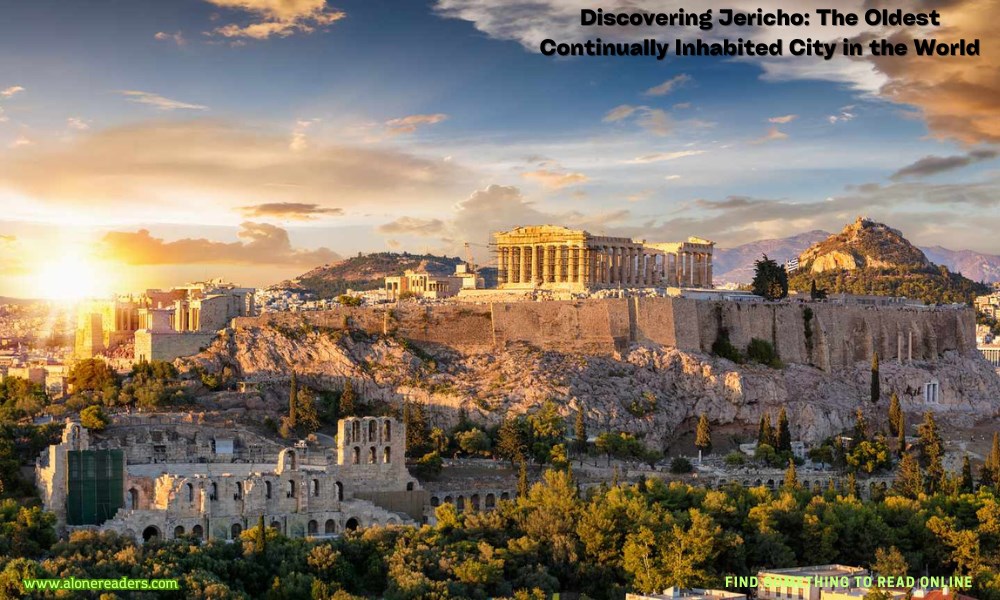
Nestled in the heart of the Middle East, Jericho stands as a testament to human endurance and civilization's capacity to flourish against the odds. While modern cities like Toronto and Vienna often make headlines for their livability, Jericho surpasses them all in terms of historical significance and timeless beauty. As the oldest continually inhabited city in the world, Jericho has been home to human beings for at least 11,000 years, making it a living museum of human history and culture.
Located in the Palestinian territory of the West Bank, Jericho is also unique in another remarkable way: it is the city with the lowest elevation on Earth. This geographical peculiarity adds another layer of intrigue to its already rich historical tapestry. The city's longevity and significance can be traced back to the end of the Mesolithic Period, around 9000 BCE, when nomadic hunter-gatherers were first drawn to its fertile lands. The presence of a reliable water source, known today as Elisha's Spring or Ein es-Sultan, provided a lifeline for these early settlers, allowing them to establish a stable community in this arid region.
By approximately 8300 BCE, the inhabitants of Jericho had already constructed significant architectural structures, including a 28-foot tower that possibly served as a cosmological marker, and a stone wall that delineated the boundaries of their settlement. These early innovations reflect the advanced nature of Jericho's society even in its nascent stages. Although the initial settlement of 2,000 to 3,000 people dissipated around 7000 BCE, the area continued to be a hub of human activity. Successive communities built upon the remnants of their predecessors, leading to the accumulation of 23 distinct layers of civilization, each representing different eras of human progress.
The strategic location of Jericho made it a coveted prize for various empires throughout history. Its appeal as a retreat and stronghold was recognized by notable historical figures such as Alexander the Great and King Herod. Under Byzantine and Ottoman rule, the city’s population and cultural landscape evolved, reflecting the diverse influences that shaped its development over millennia.
Despite its profound historical significance, Jericho today remains relatively obscure on the global stage. Its ancient ruins and historical sites offer only a whisper of its past grandeur, yet they serve as poignant reminders of the city's pivotal role in human history. The remnants of ancient walls, towers, and settlements provide invaluable insights into the lives of those who walked its streets thousands of years ago.
One of the most fascinating aspects of Jericho’s history is the evolution of its agricultural practices. Early inhabitants pioneered techniques that laid the groundwork for the agricultural revolutions that followed. The fertile grounds around Jericho, nourished by Elisha’s Spring, allowed these early settlers to cultivate crops and domesticate animals, marking a significant shift from nomadic lifestyles to more settled, agrarian societies. This transition not only supported population growth but also led to advancements in technology, social structures, and trade.
The city's archaeological sites, such as Tell es-Sultan, continue to yield treasures that deepen our understanding of ancient civilizations. Excavations have revealed complex societal structures and a high degree of sophistication in art and architecture. These findings underscore Jericho’s importance as a cultural and economic center in the ancient world.
Today, Jericho is a quiet city, often overshadowed by more modern and bustling urban centers. However, for those who visit, it offers a unique opportunity to step back in time and walk in the footsteps of ancient peoples. The city's serene environment, combined with its historical depth, makes it a place of reflection and discovery. Visitors can explore ancient ruins, visit the renowned Elisha’s Spring, and imagine the lives of those who once called this oasis their home.
Jericho's story is one of resilience and continuity. Despite the numerous challenges it has faced over millennia, including invasions, natural disasters, and political upheavals, the city has endured. Its ability to adapt and thrive through various epochs is a testament to the ingenuity and spirit of its people.
In conclusion, Jericho is more than just the oldest continually inhabited city in the world; it is a symbol of human endurance and the ceaseless quest for a better life. Its rich history, from the early Mesolithic settlers to its role under great empires, paints a vivid picture of human progress. While it may not boast the modern amenities of cities like Toronto or Vienna, its historical and cultural significance is unparalleled. Jericho invites us to appreciate the deep roots of human civilization and the enduring legacy of those who have come before us. As we look to the future, the ancient city of Jericho stands as a poignant reminder of our shared past and the timeless beauty of human history.